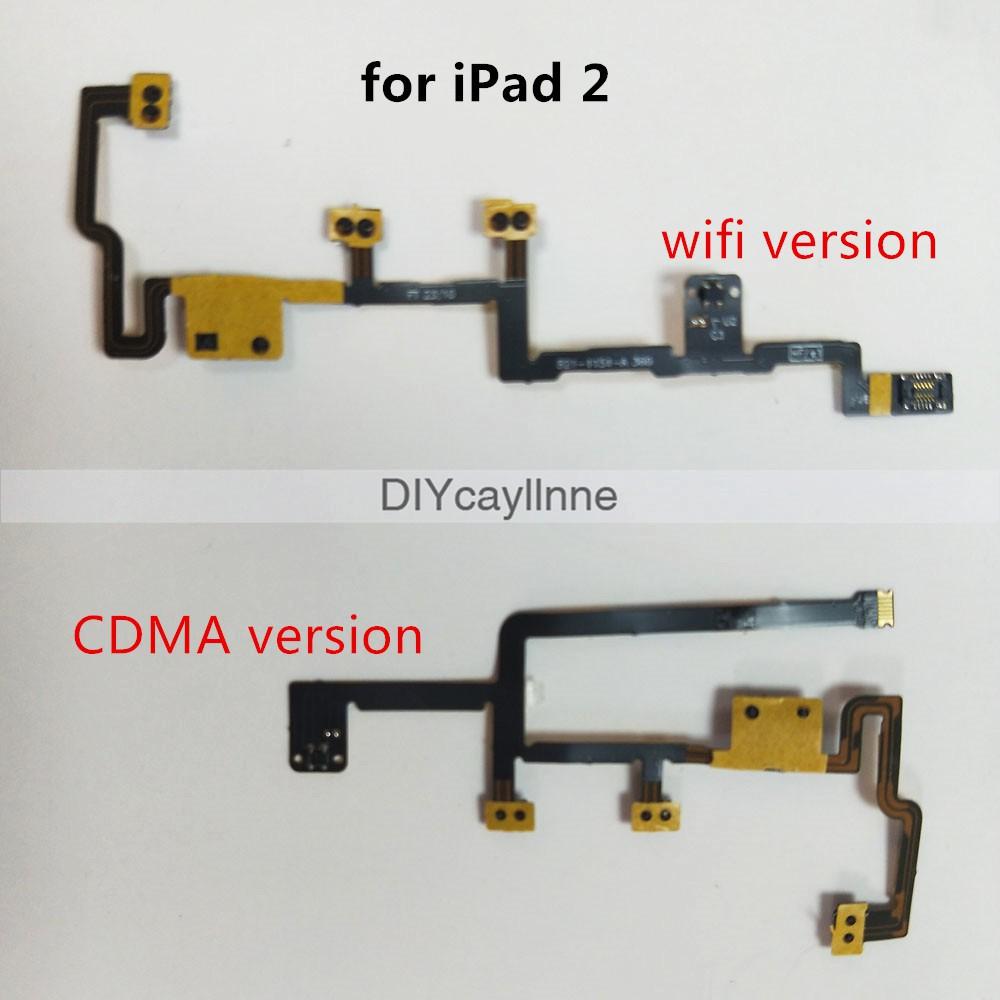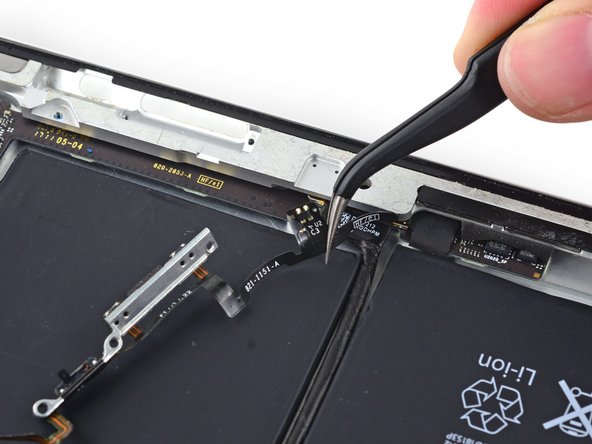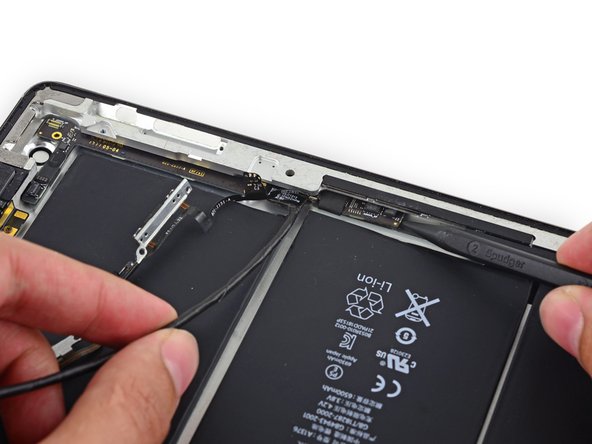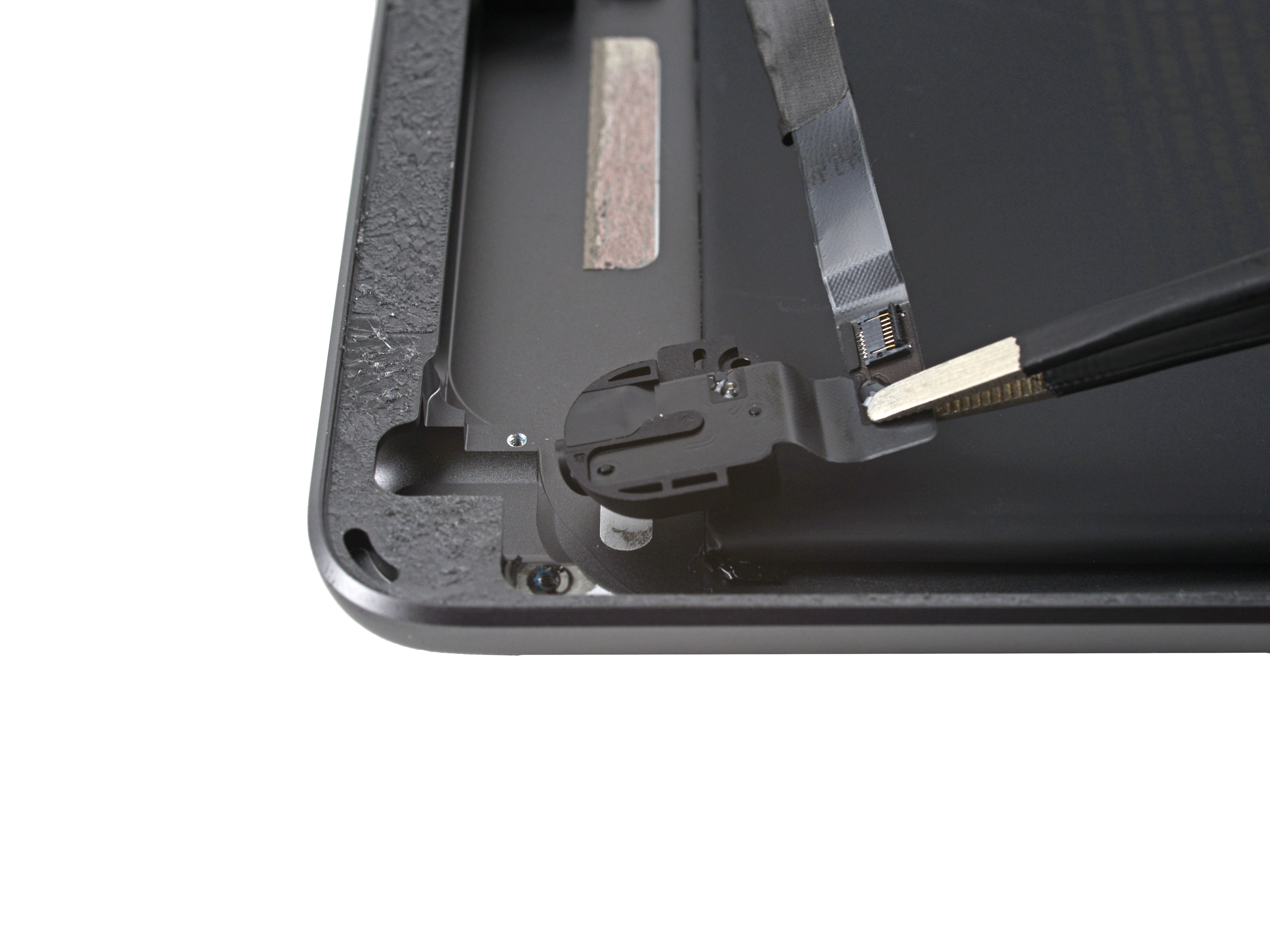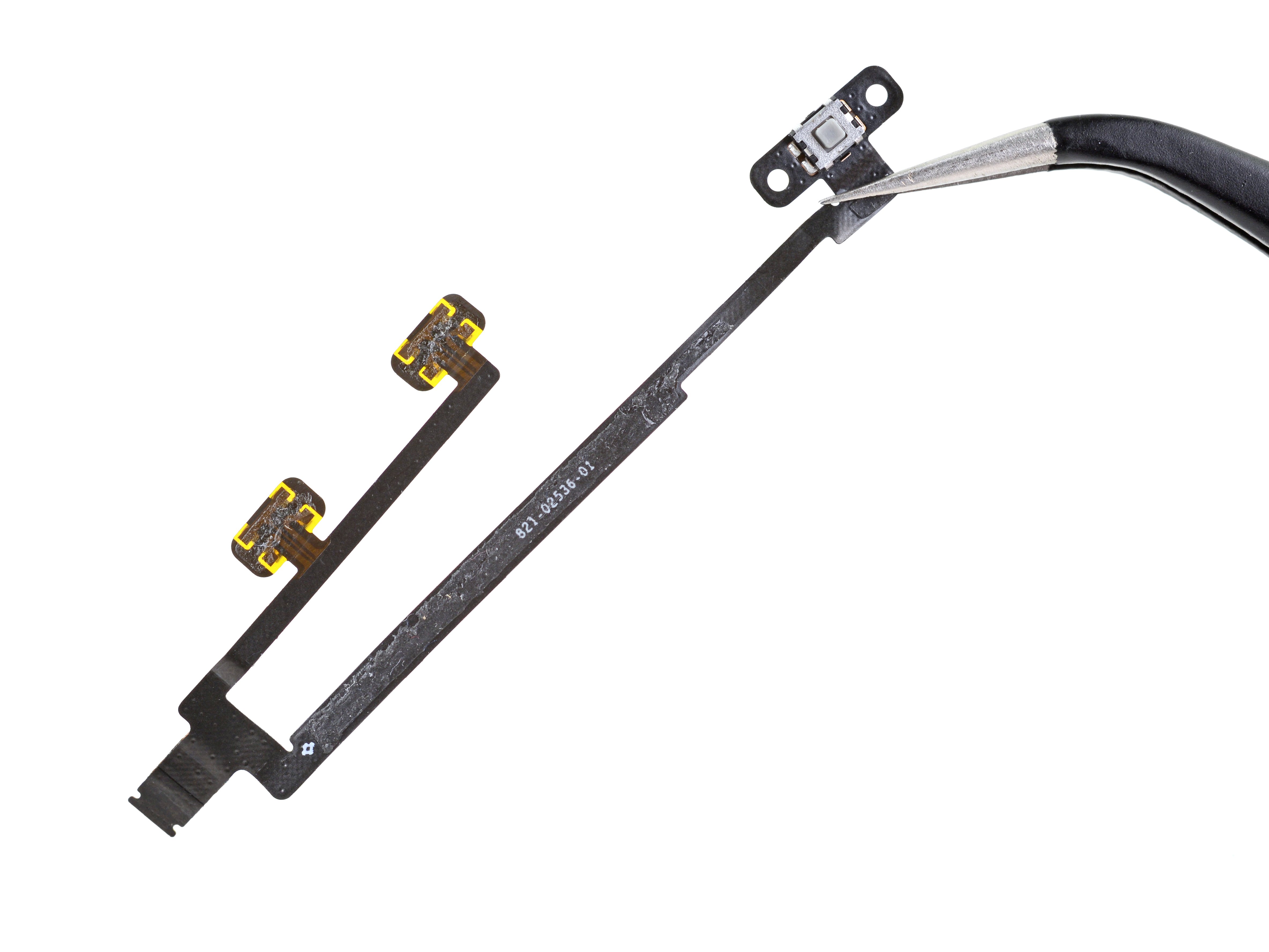How to Replace iPad 2 CDMA Volume and Power Button Cable
Duration: 45 minutes
Steps: 57 Steps
Get ready to tackle the replacement of the volume and power button cable assembly in your iPad 2 CDMA! This assembly also houses the sensor that detects the magnet in a Smart Cover. Just a heads up, some parts of this guide were filmed using a Wi-Fi model, so the insides might look a tad different from the cellular version. But don’t worry, the steps are the same for both models, except where we mention otherwise. If you need help, you can always schedule a repair.
Step 1
A quick tip before diving in: it’s a good idea to give your microwave a little scrub down. Any leftover mess on the bottom could find its way onto the iOpener, and nobody wants that!
– Pop that iOpener right in the middle of the microwave like a pro!
Tools Used
Step 2
Hey there! Just a heads up to keep an eye on the iOpener while you’re working. We wouldn’t want it to get too toasty—overheating can make it go boom! So let’s keep it under 100˚C (212˚F), alright?
And remember, if the iOpener looks like it’s puffing up, steer clear! Safety first!
If the middle of the iOpener is still a bit too warm to handle, don’t stress! Just hang tight and let it cool off a bit before giving it another go. A well-heated iOpener should stay cozy for about 10 minutes. You’ve got this!
– Pop that iOpener in the microwave for thirty seconds to get it nice and toasty!
– During your repair adventure, keep that iOpener cozy by giving it a quick reheat in the microwave for another thirty seconds whenever it starts to cool down.
Tools Used
Step 3
Caution: The iOpener gets super toasty, so handle it with care! An oven mitt might just become your new best friend.
– Carefully take the iOpener out of the microwave, gripping one of the flat ends to steer clear of that hot center. Safety first, my friend!
Tools Used
Step 4
No microwave? No problem! Just pop your iOpener into some boiling water to warm it up.
– Grab a pot or pan and fill it up with enough water to completely submerge your iOpener. Let’s make it a cozy bath!
– Bring that water to a rolling boil, then turn off the heat. Safety first, right?
– Carefully drop your iOpener into the hot water and let it chill there for 2-3 minutes. Just make sure it’s fully covered by the water—no floating allowed!
– Using tongs (because we’re not trying to burn our fingers here), fish out the warm iOpener from the water.
– Give the iOpener a good towel dry—let’s keep it nice and dry!
– And voilà! Your iOpener is all set for action! If you find it needs a little more warmth, just repeat the process: heat the water, turn off the heat, and let your iOpener soak for another 2-3 minutes. Easy peasy!
Tools Used
Step 5
Rock those safety glasses to keep your peepers safe, and watch out for that delicate LCD screen—it’s more fragile than it looks!
– If your display glass is cracked, grab some tape and keep that breakage in check to avoid any injuries while you work your magic on the repair.
– Apply overlapping strips of clear packing tape across the iPad’s display until the entire front is nicely covered.
– Do your best to follow the rest of the guide as laid out. Just a heads up, once the glass starts cracking, it may keep on doing its thing as you go. You might need a metal prying tool to help scoop out the glass, so keep that handy!
Step 6
Just a friendly reminder: while you’re getting your hands dirty, keep those peepers safe! We highly recommend rocking some safety glasses to shield yourself from any sneaky glass shards that might try to escape. Stay safe and repair on!
– Place the iOpener flat against the right edge of the iPad, making sure it’s snug and cozy for optimal contact between the iPad’s surface and the iOpener.
– Give it a little time to work its magic—let the bag chill on the iPad for about 90 seconds before you dive into opening the front panel.
Tools Used
Step 7
Getting that wedged tip of the opening tool between the glass and plastic might take a little elbow grease. Just take your time and be gentle—wiggle the tool back and forth as needed to ease it in. You’ve got this!
– Hey there! Notice that little gap in the iPad’s adhesive ring up in the upper right corner? It’s about 2.0 inches (~5 cm) from the top. Let’s take advantage of that tiny weakness!
– Now, line up your tool with the mute button. Gently slide the tip of a plastic opening tool into that gap between the front glass and the plastic bezel. Just get the very tip in there, enough to give that crack a little nudge.
Step 9
– With the plastic opening tool snugly placed between the front glass and the plastic bezel, gently slide a plastic opening pick into the gap right next to it. You’re doing great—keep it steady!
Step 10
– Gently take out the plastic opening tool from your iPad and slide the opening pick under the front glass, pushing it down about half an inch. You’ve got this!
Step 12
The adhesive is super strong, so you might need to put in a little muscle. Take your time and be gentle with it!
If you can spot the tip of the opening pick peeking out from under the front glass, give it a gentle tug. While it’s totally safe to use the pick this deep, just a heads up—it might leave a little adhesive residue on the LCD. No biggie, though!
– While the bottom edge is getting a warm welcome from the iOpener, start peeling back the adhesive on the right edge of your iPad.
– Gently slide the opening pick down the edge of the iPad, letting it work its magic to release the adhesive as you go along.
Tools Used
Step 13
You might need to slide that warm iOpener back over to the right edge of the iPad as you peel away the adhesive. Just keep in mind, this all depends on how long the iPad has been cooling off while you were busy working your magic.
– If the opening pick gets caught in the adhesive, just give it a little ‘roll’ along the side of the iPad to help free it up and keep that adhesive releasing like a champ!
Tools Used
Step 14
– Before you dive in and pluck that first opening pick from the bottom corner of the iPad, slide a second pick under the right edge of the front glass to keep the adhesive from getting too cozy again.
– Give the iOpener a little reheat love, then gently place it on the top edge of the iPad.
Tools Used
Step 15
The Wi-Fi antenna is snugly secured to the bottom right corner of the iPad’s rear case with screws and a cable. Given the way the Wi-Fi antenna is positioned, it’s super important to handle it with care—otherwise, you might accidentally cause some serious damage to it. So, let’s keep it safe and sound!
– Alright, folks! Time to put on your safety goggles because the next steps require a steady hand and a sprinkle of caution.
– We need to gently detach the adhesive that’s holding the antenna to the front panel. Just remember, be super careful not to harm those delicate bits connecting the antenna to the bottom of your iPad. Follow the upcoming steps closely, and you’ll be just fine!
Step 16
Hey there! Just a friendly reminder: don’t slide that pick past the bottom right corner. You might accidentally give the Wi-Fi antenna a little too much love, and we wouldn’t want that!
– Gently glide the opening pick around the bottom right corner of your iPad to free up that sticky adhesive. You’ve got this!
Step 17
Take it easy while gliding that opening pick along the bottom right edge of the front panel. The Wi-Fi antenna is sneaky, hiding close to the corner, and it can get snipped if the adhesive gets too wild. Keep it steady and you’ll be just fine!
Just a friendly tip: don’t yank that pick all the way out from under the front glass! Give it a gentle tug so that about 1/8″ (3 mm) of the tip stays snugly in place. You’ve got this!
– Gently glide the tip of your opening pick along the bottom edge of the iPad to free up the adhesive around the Wi-Fi antenna. You’ve got this!
Step 18
– After you’ve navigated past the Wi-Fi antenna (that’s about 3″ (75 mm) from the right edge, or right next to the home button), gently slide the opening pick back in all the way.
– Now, give that pick a little nudge to the right to break free the adhesive holding the Wi-Fi antenna to the front glass. You’re doing great!
Step 19
Keep the iOpener’s heating time to a minute max, and remember to give it a breather of at least two minutes before warming it up again. You’ve got this!
– Keep on peeling that adhesive from the bottom of your iPad! Gently pull the opening pick out far enough to wrap around the home button. Once you’ve navigated past the home button, slide it back in to a depth of about 1/2 inch (10 mm). You’re doing great!
Tools Used
Step 20
– Keep peeling that adhesive along the bottom edge of the iPad like a pro!
– Slide the opening pick snugly under the front glass near the home button and let it chill there.
Step 22
If the adhesive has cooled down a bit too much, just swap in a fresh iOpener along the top edge and keep going. If your iOpener is feeling a little chilly, give it a quick reheat and get back to work!
– Gently slide the opening pick along the top edge of your iPad, giving it a little tug to navigate around the front-facing camera bracket.
– This section has some seriously thick adhesive, so you might need to apply a bit of elbow grease. Take your time and be careful—nobody wants to slip and accidentally damage your iPad!
– If the opening pick feels like it’s stuck in the adhesive, try ‘rolling’ it as demonstrated in step 9.
Tools Used
Step 23
If the adhesive is feeling nice and warm, go ahead and take the iOpener off the iPad for a bit of ease. But if it’s still a bit clingy, just give the iOpener another heat-up and set it on the left edge while you do your thing.
– Keep working that adhesive free along the top edge of your iPad, and gently slide the opening pick around the top left corner like a pro.
Tools Used
Step 24
The digitizer cable hangs out about 2″ (50 mm) from the bottom of your iPad. So, when you’re sliding that pick, hit the brakes at around 2.25″ (60 mm) from the bottom. You’ve got this!
– Gently glide the opening pick along the left edge of your iPad, letting it work its magic on the adhesive as you go. The adhesive is pretty slim here because of the digitizer running along the entire left side. Just a friendly reminder: keep the pick no deeper than 1/2 inch (10 mm) to avoid any mishaps with the digitizer.
Step 25
Be super careful! The digitizer cable is hanging out just about an inch (25 mm) from the bottom of the iPad. Take your time and handle it gently to avoid cutting this little guy.
– With your trusty opening pick still snugly in place at the bottom edge of the iPad, gently free the adhesive in the bottom left corner. Remember, patience is key!
Step 26
It looks like some of the adhesive around the edge of your iPad might have decided to play the clingy game again. No worries! Just grab a pick and gently slide it under the edge where the front glass is still holding on tight. Give that adhesive a little ‘snip’ and you’re on your way! If you need help, you can always schedule a repair.
– With one of those handy opening picks, gently lift the bottom right corner of the iPad and give it a little tug with your fingers. You’ve got this!
Step 27
Watch out for any stubborn adhesive still hanging on! Grab an opening pick and gently slice through any sticky bits that might be keeping the front panel in place. You’ve got this!
– Grab your iPad by the top and bottom right corners, and gently twist the front glass away from the device. It’s like a little dance move for your tech!
– As you put everything back together, don’t forget to give that LCD a little love! Use a microfiber cloth and some compressed air to wipe away any dust or fingerprints before you seal it up again.
Step 28
– Unscrew those four 2.0 mm Phillips #0 screws that are holding the LCD snugly to the rear case. You’ve got this!
Step 29
– The front panel ribbon cables are tucked away under the LCD. To reach them, you’ll need to carefully flip the LCD over for a moment and set it aside.
– Start by lifting the LCD from the edge nearest to the volume buttons and gently flipping it out of the rear case—think of it like turning the page of a book.
– Once you’ve done that, place the LCD face down on the front panel.
Step 30
– Gently lift the rubber cover off the shiny metal camera retainer and set it aside as you free your iPad 2 from its little grip.
Step 31
Make sure that the tiny thermal pad is snugly attached to the metal retaining clip, just like in the third picture, when you’re swapping out the rear camera. You’ve got this!
– First things first, let’s get those two screws out of the way!
– Now, gently lift the metal retainer clip straight up from its cozy little spot in the rear panel.
Step 32
– Grab a trusty plastic opening tool and gently lift the rear camera connector up from its cozy spot on the upper component board. Easy peasy!
– Now, go ahead and remove the rear camera like a pro!
Step 33
Time to say goodbye to that foam tape sitting on top of the GPS cable ZIF connector! Peel it off with care.
Hold your horses on disconnecting this cable just yet—it’ll pop right out when you take off the upper component board.
– Grab your trusty spudger and gently nudge the retaining tab on the ZIF connector to set the GPS cable free. You’re doing great!
Step 35
– Take off the metal bracket that’s holding the rotation lock/silent switch in place.
Step 36
– Gently pull the power button cable from its cozy little spot in the rear case and give it a little bend to keep it out of your way.
– Inside that ribbon cable is the mechanical button that needs to connect with the plastic button cover still hanging out in the case.
Step 37
– Gently detach the sleep/power button from the back cover. Remember to take note of how it fits together for when it’s time to put everything back; the metal spring bar should be positioned to drop down toward the back of the case.
Step 38
Hey there! Just a heads up, don’t completely detach the bracket since it’s still connected to the button ribbon cable. Keep it cozy in its spot!
– Gently use the center screw hole of the volume control bracket to nudge it out towards the case’s edge, then lift it up and out of its cozy little spot.
Step 39
– Carefully peel the power and volume button cable away from the rear case—it’s like a gentle hug for your device!
– Now, bend that cable toward the inside of the rear case, but remember, it’s still connected to the upper component board, so no need to rush this part.
Step 40
– Let’s kick things off by taking out the rotation lock or silent switch from the back cover. Easy peasy!
– Keep an eye on how everything is oriented for when it’s time to put things back together. Remember, the mechanical switch has to fit snugly with the button cover, so make sure they click together just right!
Step 41
– Grab your trusty spudger and gently nudge that volume rocker into the cozy confines of the rear case.
– Now, it’s time to say goodbye to the volume rocker as you carefully lift it out from the rear case.
Step 42
– Gently use the tip of an opening pick to lift the Smart Cover sleep/wake sensor away from the rear case. You’ve got this!
Step 43
– Gently lift the volume rocker section of the button cable away from the back case. If you need help, you can always schedule a repair.
Step 44
Hey there! Just a quick heads up: don’t go yanking that cable out completely. It’s still hanging on, connected by a little tape to the upper component board. Let’s keep it together, alright?
– Carefully peel away the last horizontal section of the rear case, taking your time to ensure everything stays intact.
Step 45
– Unscrew the lone 2 mm Phillips #000 screw from the bottom of the upper component board. You’ve got this!
Step 46
– Grab a trusty pair of tweezers and gently lift that foam block out from its cozy spot between the rear case and the upper component board. You’ve got this!
Step 47
Handle the board with care—no bending or scraping against the rear case, please!
– Gently slide a spudger under the edge of the upper component board and nudge it toward the volume rocker to release it from the adhesive. If you need help, you can always schedule a repair.
Step 48
Handle with care! Make sure the board doesn’t get too cozy with the top of the rear case.
– Gently slide a spudger under the GPS connector at the upper component board’s end and lift it away from its sticky friend. No need to be shy, just give it a little nudge!
– As you do this, the GPS antenna cable will gracefully pop out of its ZIF socket. When it’s time to put everything back together, just slide that cable back into its cozy spot as you reattach the upper component board.
Step 49
Be gentle when disconnecting the cable—lift it straight out, not up!
– Lift the retaining bar that holds the upper component board cable connector in place.
– Gently pull the connector straight out from its socket on the logic board.
Step 50
– Gently lift the end of the upper component board cable away from the adhesive that’s keeping it cozy with the rear case.
Step 51
Gently tug on the cable of the upper component board while lifting it just enough to clear the battery—don’t go too high, or you might scrape the rear case! Take your time and be careful; you’ve got this!
– Gently slide the tip of your trusty spudger under the upper component board to give it a little lift.
– Carefully pull the board up and out from the cozy spot between the battery and the rear case bezel.
– Say goodbye to the upper component board as you remove it.
– When it’s time to put things back together, don’t forget to reconnect the GPS antenna cable. A little help from tweezers can make this a breeze, so take your time and work with care!
Step 52
– Gently peel away the tape that’s shielding the button cable connector on the upper component board. You’ve got this!
Step 53
– Gently lift the button cable connector straight up from its spot on the upper component board. You’ve got this!
Step 54
If your replacement part has those nifty metal button brackets already in place, feel free to breeze right past the next steps!
– Carefully detach the power button from its bracket like a pro.
– Keep an eye on how it’s positioned and where the sticky stuff is for when it’s time to put everything back together.
Step 55
– Slide the tip of an opening pick between the rotation lock/silent switch and its bracket to break the adhesive bond there.
Step 56
– Gently slide the opening pick underneath the leftover part of the rotation lock/silent switch and lift it off the button bracket with ease.
Step 57
– Grab your trusty opening pick and gently lift those mechanical volume buttons off the bracket. They’ll pop right up!
– Next, carefully detach the button cable assembly from the button bracket. You’re doing great!
